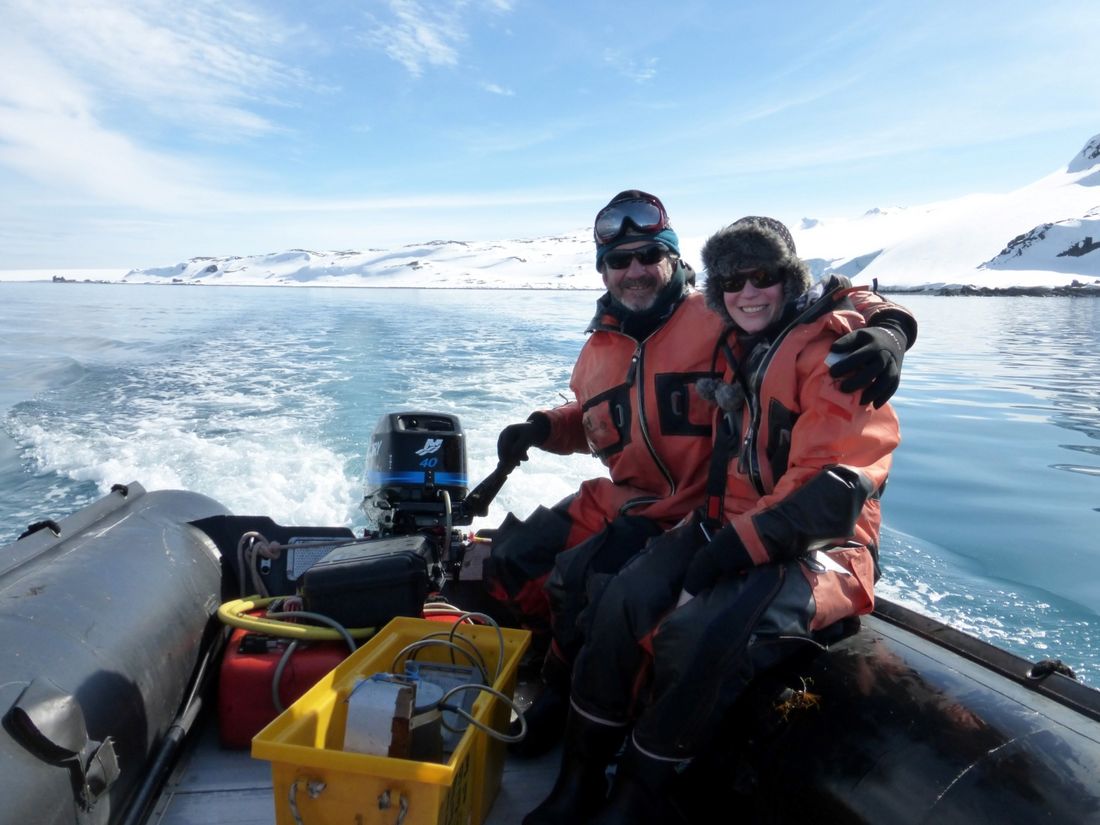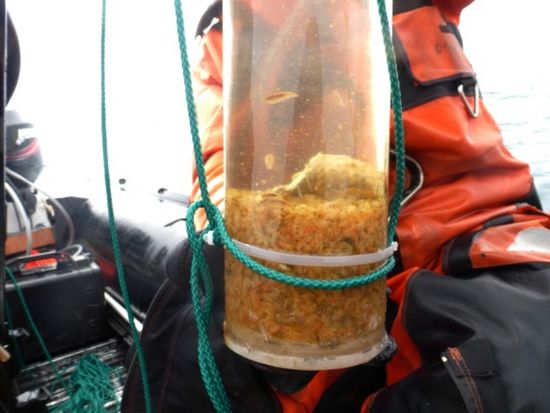Investigating the ecological role of scavenging amphipods (Crustacea) in Potter Cove
The new cooperation project between the AWI (Christoph Held and myself) and Esteban Barrera-Oro, Maria Eugenia Moreira (both ictiología group, DNA- IAA, CONICET) as well as our partners from the macroalgae group María Liliana Quartino, Dolores Deregibus and Gabriela Laura Campana (DNA-IAA) investigates the ecological role of scavenging amphipods (Crustacea: Lysianassoidea) and their potential response in a changing polar food web. Since not much has been known about the scavenging amphipod guild in the Potter Cove one of the aims of the initial expedition 2014/2015 was to record the taxonomical diversity of lysianassoid amphipods in the Potter Cove.
After 10 days on the MS Polar Pioneer, which I boarded in Mar del Plata, I finally arrived to Carlini Station on 26th of October 2014. During the first two weeks I was engaged to set up my equipment particularly aquaria in the Dallmann Laboratory. Additionally, I was busy to test the baited trap systems I wanted to use for collecting the amphipods. After the most efficient trap system was found and constructed I started my sampling series at various depths and sample sites that are differently influenced by glacier retreat in the Potter Cove. Until the end of the expedition I was able to release more than 30 baited traps. These data give us baseline information about the species composition of scavenging amphipods in the Potter Cove. It allows us to monitor these crustaceans, which are important decomposers of organic material, and to detect possible changes in the species composition caused by increasing glacier retreat.
The second part of my investigation at Carlini Station was to carry out feeding experiments in the Dallmann Laboratory. In these experiments the decomposition of carcasses from the notothenid fish Notothenia coriceps, attracted to different members of the amphipod scavenger guild, was tested. Due to these experiments I could also find out more about the role allocation of small and big lysianassoid species by behavioural observations. According to observations of our cooperation partners from the ictiología group scavenging amphipods can be regularly found and caught in fish nets when they start to feed on fishes even when the fish is still alive. These highly abundant amphipods are able to decompose big fishes like the icefish Chaenocephalus aceratus within a short time period.
In a further preliminary experiment I tested with my cooperation partners from the macroalgae group ( Gabriela Campana/Dolores Deregibus) the feeding preference and the consumption rate of the omnivore lysianassoid amphipod Cheirimedon femoratus on different food items (macroalgae Palmaria decipiens and the ice cod Notothenia rossii).
All the information will help us to get a better understanding of benthic communities and food web interactions in the Potter Cove.
Overall, the first expedition of our project was not only a success in scientific respects but also regarding the exchange and sharing of experiences and knowledge, both with my cooperation partners and other scientists with various research interests. Working in this breathtaking environment with excellent laboratories was a great experience for me.
Meike A. Seefeldt





